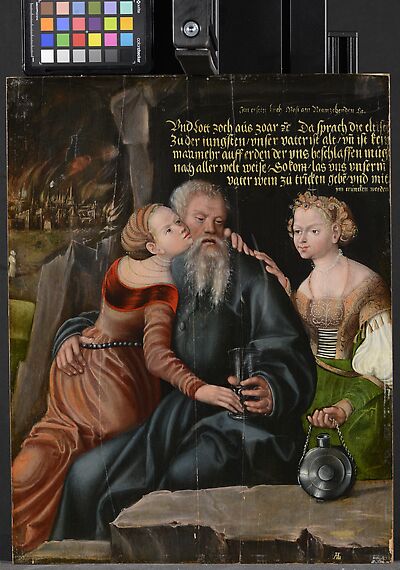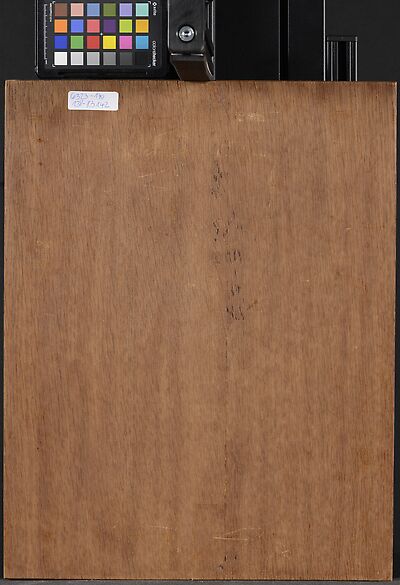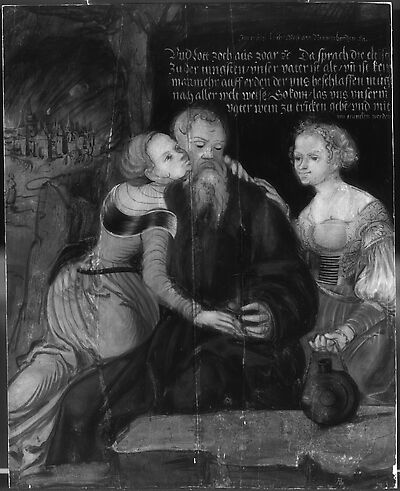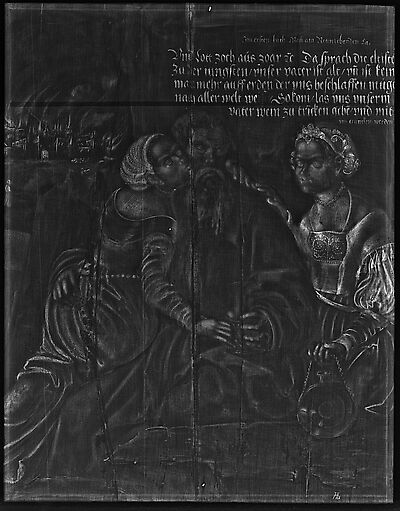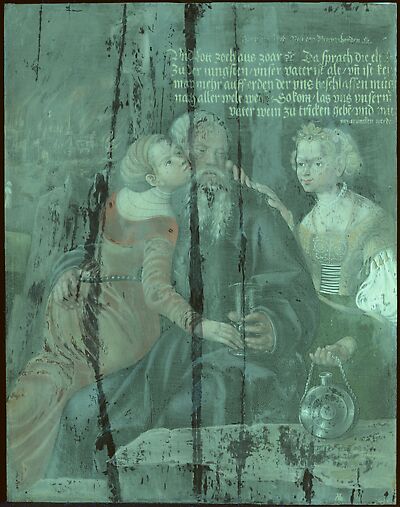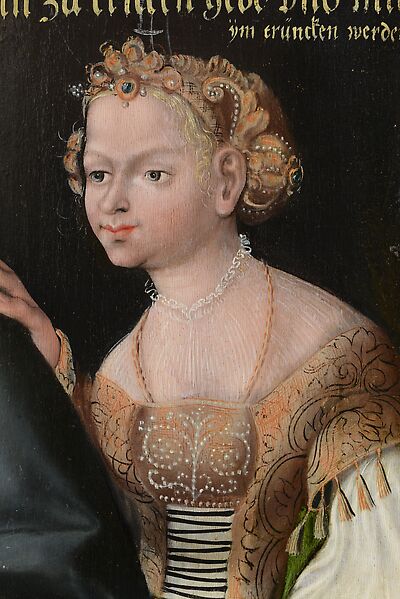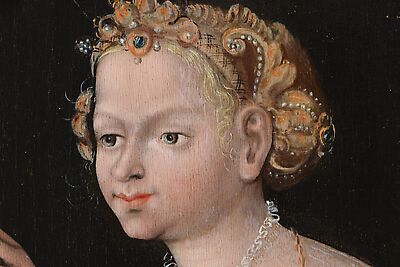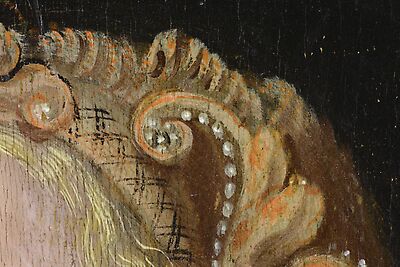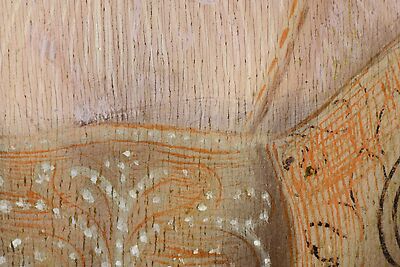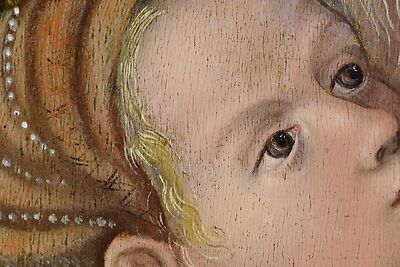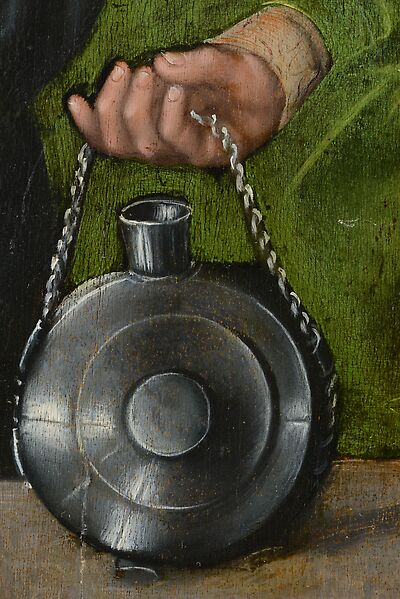- Attribution
- Antonius Heusler
Attribution
| Antonius Heusler | [unpublished examination report Heydenreich, Blumenroth, 28.01.2024] |
- Production date
- about 1540 - 1550
Production date
| about 1540 - 1550 | [unpublished examination report Heydenreich, Blumenroth, 28.01.2024] |
- Dimensions
- Maße Bildträger: 46,2 × 36,2 cm
Dimensions
Maße Bildträger: 46,2 × 36,2 cm
[unveröffentlichter Untersuchungsbericht Heydenreich, Blumenroth, 28.01.2024]
Dimensions of support: 46.2 × 36.2 cm
[unpublished examination report Heydenreich, Blumenroth, 28.01.2024]
- Signature / Dating
Artist's insignia at the bottom right: Monogram 'A H' (linked)
Signature / Dating
Artist's insignia at the bottom right: Monogram 'A H' (linked)
- Inscriptions and Labels
- at the top centre right, in yellow paint:
'Im ersten buch Mosi am Neunzehenden La. | Und Lott zoch …Inscriptions and Labels
Inscriptions, Badges:
- at the top centre right, in yellow paint:
'Im ersten buch Mosi am Neunzehenden La. | Und Lott zoch aus zoar [?] Da sprach die eltist | zu der iungsten/vnser vater ist alt/vn ist kein | man mehr auff erden der vns beschlaffen mug | nach aller welt weise sokom las vns vnserm | vater wein zu tricken gebe vnd mit | ijm truncken werden'
Stamps, Seals, Labels:
On the reverse: - paper label, handwritten: '6323–170 / 138–83142'
[unpublished examination report Heydenreich, Blumenroth, 28.01.2024]
- Owner
- Private Collection
- Repository
- Private Collection
- CDA ID
- PRIVATE_NONE-P642
- FR (1978) Nr.
- FR-none
- Persistent Link
- https://lucascranach.org/en/PRIVATE_NONE-P642/
- at the top centre right, in yellow paint:

